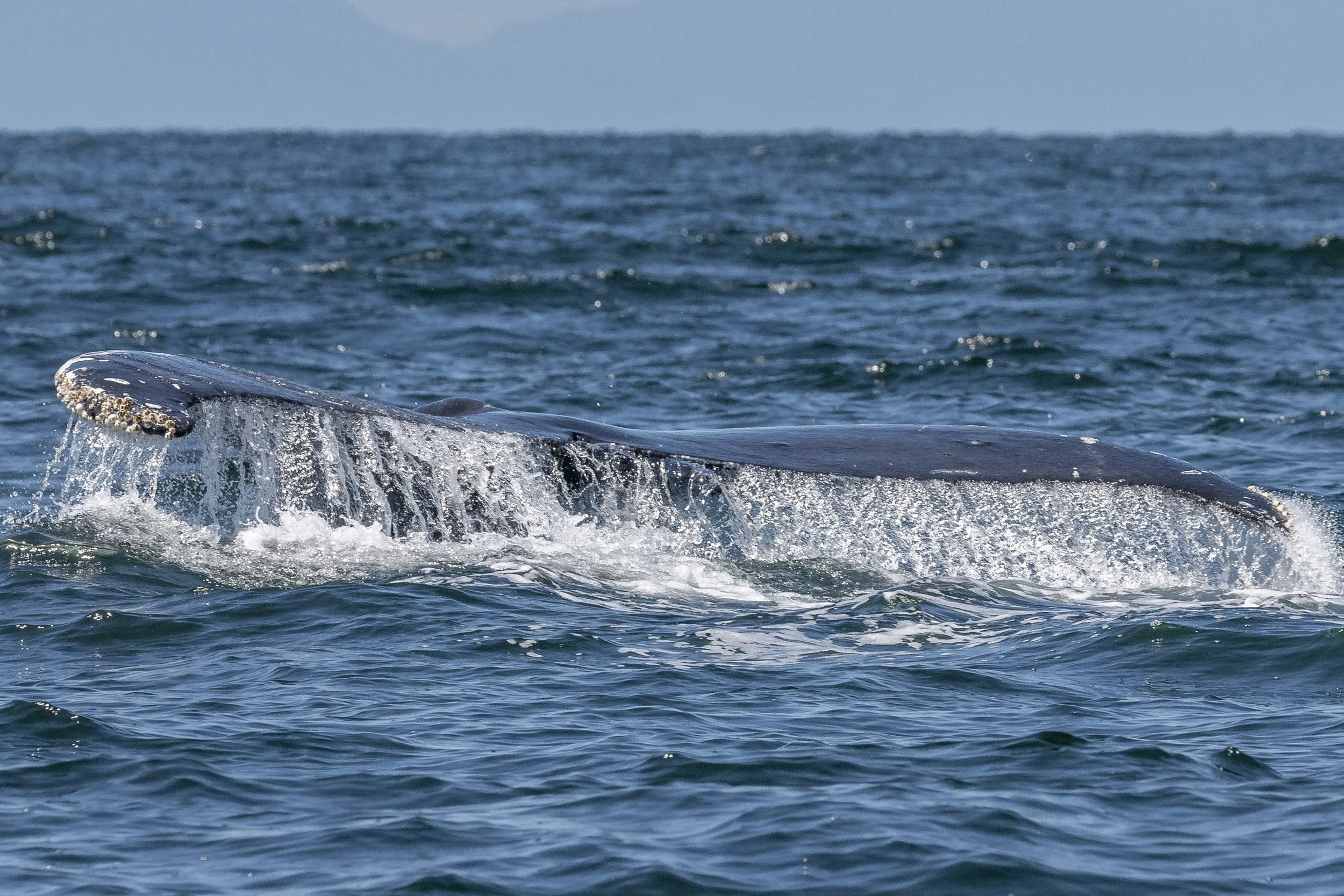July 3, 2024, 10:30 am - Whaley good friends?
It was another great day to explore the Salish Sea! We were lucky enough to find both the Orca and Humpback whales this morning, such a treat when we get both species! This morning we decided to cross the Strait of Georgia and see who we could find on the Sunshine Coast, this was a great move by our Captain. Sometimes we just get lucky, we saw a blow…it was Lucky! Lucky is a member of the T123s, a Transient/Biggs Orca pod. They were having what we call a T-party, this is when multiple pods of transient Orca come together to socialize! The whales at this party were:
T086A3 Tyndall ♀ (2011)
T086A3A (2024)
T123 Sidney ♀ (~1985)
T123A Stanley ♂ (2000)
T123C Lucky ♀ (2012)
T123D Darcy ♀ (2018)
The Orca are incredibly social and usually stay with their mothers their entire lives, with the males being the biggest mama’s boys! The mothers tend to show some favouritism towards the firstborn son as well, so why wouldn’t you stay and get taken care of? When the females have had a calf or two of their own and the pod starts to get a little crowded, it becomes harder to sneak up on unsuspecting mammals, sp they branch off! This is how we get new Matriarchs leading the newest pods. Tyndall and her newborn have been travelling away from her pod, could it be because her mother T086A Eider and sister T086A1 Nahanni both had calves of their own this year too? Is Tyndall branching off and becoming her own Matriarch?
Talking about luck again, we spotted blows not too far from our Orca, but this time it was Humpbacks! The Humpbacks do not have as complex of a social structure as our Orca. In fact, in the past, it was believed they were fairly solitary animals! Now that the Humpback numbers continue to grow we are seeing that we may have been wrong. The Humpbacks we saw today Graze (BCY0523) and Strike (BCX1675) have been documented associating on other occasions as well. We believe they are old friends possibly travelling together for many years. There is also a theory that pregnant females tend to travel together, although they aren’t sure why. Since Strike and Graze both had calves last year and typically have caves every two years could it be that this pair are pregnancy buddies? Keep an eye on our blogs next season to see if they return with bouncing babies in tow!
After getting a look at both species of whales we also got to meet our most abundant member of the Salish Sea, with approximately 50, 000 calling it home, the Harbour Seals! They were as cute as ever hanging out on the rocks.
Finally, we found ourselves returning to the harbour after getting to see so many of the species that call the Salish Sea home. Enjoy the photos below taken by Marine Naturalist Hayleigh during the tour!
T123A Stanley surfacing in the Strait.
A great look at T123A Stanley’s eye patch! Did you know this patch is unique to each individual?
T123A Stanley also has this distinct notch in the top third of his dorsal fin.
T123D Darcy surfacing in the waves. She has a much smaller dorsal fin than her brother Stanley!
Graze’s dorsal fin as she arches her back to dive.
You can see how much rounder Strikes dorsal fin is compared to Grazes in the previous photo.
Strike is creating a fluke waterfall as she lifts her tail to dive.
The underside of Strikes tail has some very unique markings which we use to ID her.
Did you know that while humpback whales have two blowholes (as seen here) orca only have one?
Some harbour seals hanging out on the rocks.
They are very smart, and are often curious about us as we watch them!











